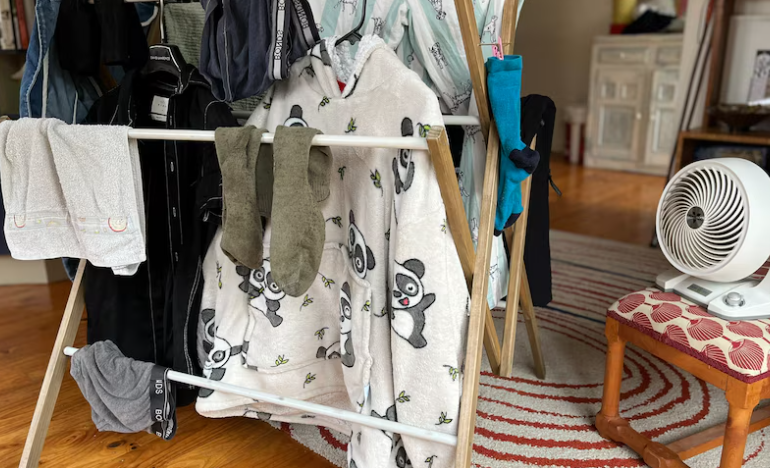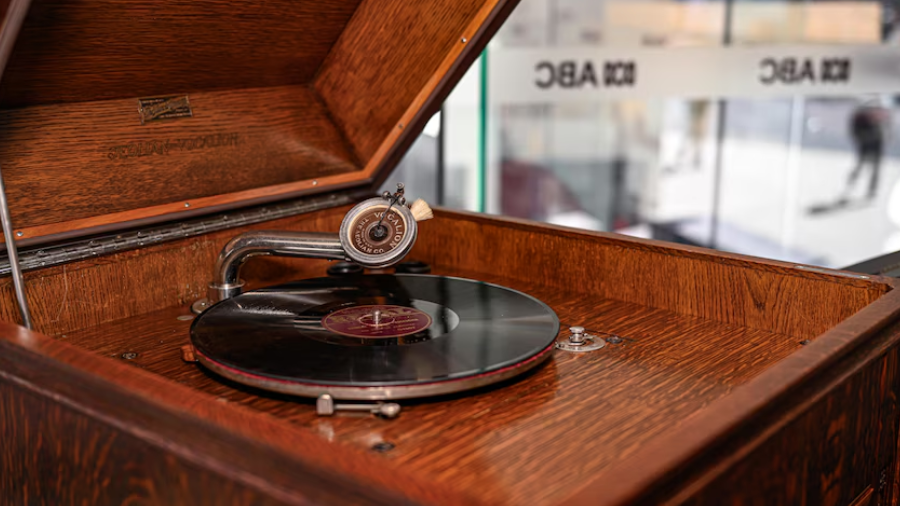How to dry laundry faster without a dryer

While some of us can dry clothes and linen without a dryer in the warmer months, winter becomes a little tricker.
“We discourage using a dryer because it uses so much energy, and drying is bad for your clothes; it wears them down,” says Lish Fejer, a science communicator and ABC reporter in Ngambri/Canberra.
She run The Fix It Chicks with co-creator Jenny Edwards, and the pair have been teaching their Instagram audience about cheap ways to wash and dry laundry.
Read on for Lish’s tips for drying clothes in winter.
First ask: Does it need to be washed?
Lish says many of us are washing our clothes too often, so it’s worth considering if an item needs washing at all.
“Will airing it do instead? Will a spot wash do? Can I get another day out of it?
“Usually the stuff like jeans and hoodies that take a long time to dry [can be skipped].”
Ways to help clothes dry quickly without a dryer
If the clothes can withstand it (avoid linens and silks, for example), Lish says to put them on a high-spin cycle in the washing machine, and repeat.
“You can give drying a head start by spinning to get rid of as much water as possible.”
When you take your clothes out of the washing machine, roll them up in a clean, dry towel, says Lish, to remove excess moisture.
Drying happens best outside, so if you have the space, take advantage, says Lish. A windy day is a bonus, as items will dry faster.
“The classic Hills Hoist is gold-class clothes drying.”
If you’re in an apartment, using the balcony is ideal — even if shady and cold.
Tips for drying laundry indoors more quickly
Lish says when using a clothing rack, make sure the clothing is spaced out well so air can circulate around each item. Using pegs means you won’t have to fold the items over.
“Look at any glass or window that is being hit by the sun — put your drying rack there, that will activate the drying process,” Lish says.
If heading out for the day, hang sheets and towels over chairs and tables.
“I love a coat hanger; I hang shirts and them put them over door frames and architraves.”
If you have a hot water system in the cupboard, you could also fold clothes that are nearly dry and place them on top.
“Be careful not to cover the pressure valve,” warns Lish.
How to manage humidity and moisture
Ventilation is important to minimise condensation and avoid mould.
“Humidity in the house is a big one [if drying clothes indoors],” says Lish.
“How do you get rid of that moisture in your house without it causing mould and mildew and the health effects that come with that?”
She recommends opening a window to manage this.
Some split-system air conditioners have a dehumidifying mode that doesn’t cool or heat (and therefore costs less to run), says Lish.
The extraction fan in your bathroom will be effective when drying in there.
You can also increase air flow indoors by using a pedestal or ceiling fan which Lish says uses little energy and helps with evaporation.
Embrace unconventional methods
For small items, Lish lays them on a towel in the back of her car and parks it in the sun while at work.
“You do have to occasionally go turn them over, and I leave the windows open a little.”
If you are using a clothes dryer…
Lish says to throw in a clean, dry towel with your wet items.
“That will significantly reduce the amount of time it needs to be on for as it absorbs some of the moisture.”
SOURCE: ABCNEWS





